Order Sphenisciformes Rank Genus | Class Aves Phylum Chordata | |
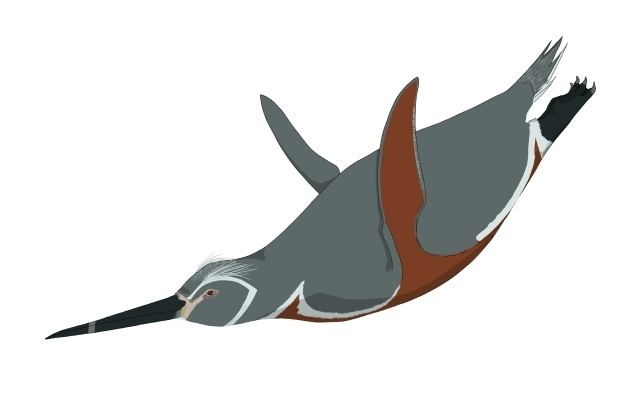 | ||
Similar Icadyptes salasi, Palaeeudyptinae, Waimanu, Pachydyptes, Anthropornis | ||
Inkayacu paracasensis giant prehistoric penguin had scales and feathers
Inkayacu is a genus of extinct penguin. It lived in Peru during the Late Eocene, around 36 million years ago. A nearly complete skeleton was discovered in 2008 and includes fossilized feathers, the first known in penguins. A study of the melanosomes, pigment-containing organelles within the feathers, indicated that they were gray or reddish brown. This differs from modern penguins, which get their dark black-brown feathers from unique melanosomes that are large and ellipsoidal.
Contents
- Inkayacu paracasensis giant prehistoric penguin had scales and feathers
- Description
- Discovery
- Paleobiology
- References
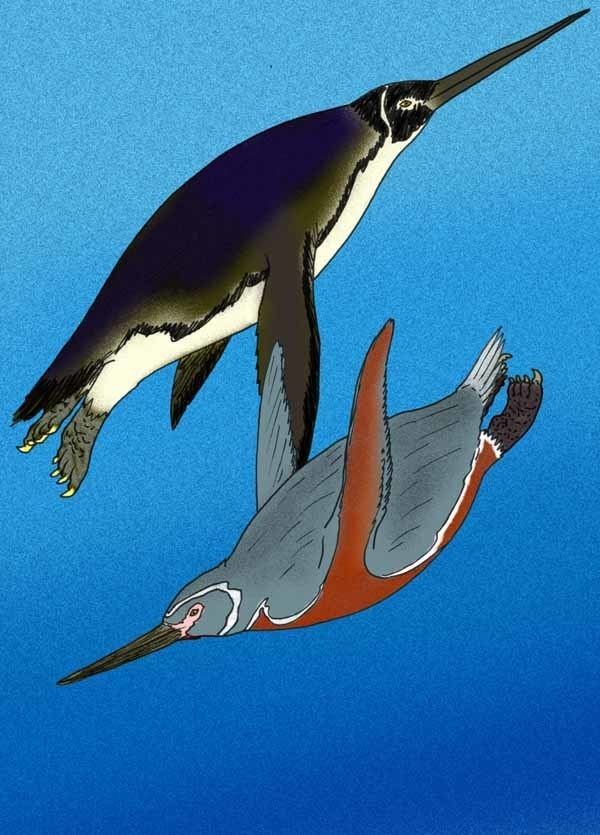
Description
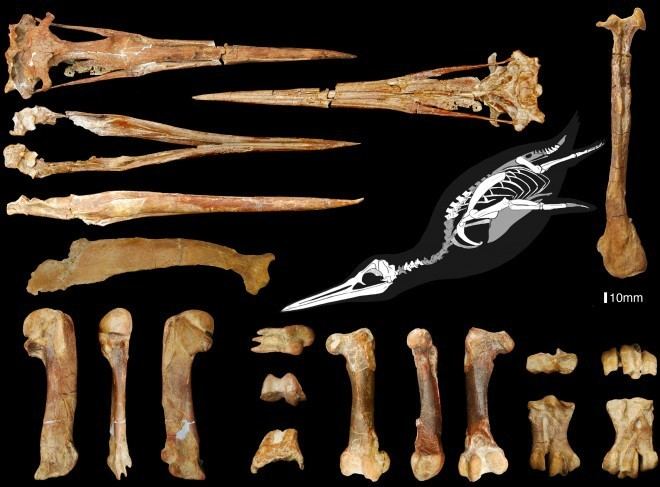
Although it was an early penguin, Inkayacu closely resembled its modern relatives. It had paddle-like wings with short feathers, and a long beak. Inkayacu, along with other extinct penguins from Peru, are often referred to as giant penguins because of their very large size. Inkayacu was about 1.5 metres (5 ft) long, in contrast to the largest living penguin, the emperor penguin, which is about 1.2 metres (4 ft) long.
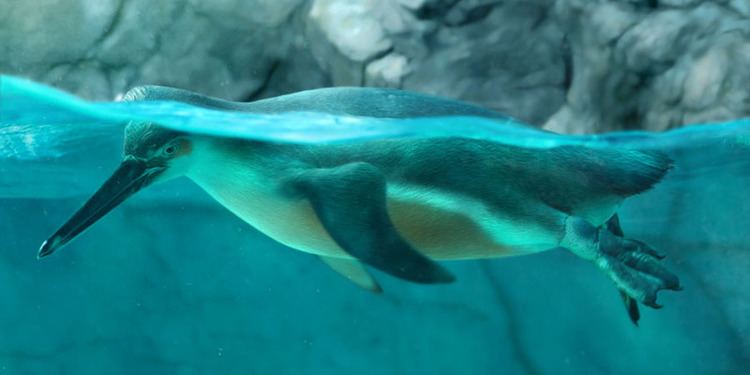
The melanosomes within the feathers of Inkayacu are long and narrow, similar to most other birds. Their shape suggests that Inkayacu had grey and reddish-brown feathering across its body. Most modern penguins have melanosomes that are about the same length as those of Inkayacu, but are much wider. There is also a greater number of them within living penguins' cells. The shape of these melanosomes gives them a dark brown or black color, and is the reason why modern penguins are mostly black and white. Despite not having the distinctive melanosomes of modern penguins, the feathers of Inkayacu were similar in many other ways. The feathers that made up the body contour of the bird have large shafts, and the primaries along the edge of the wings are short and undifferentiated.
Discovery
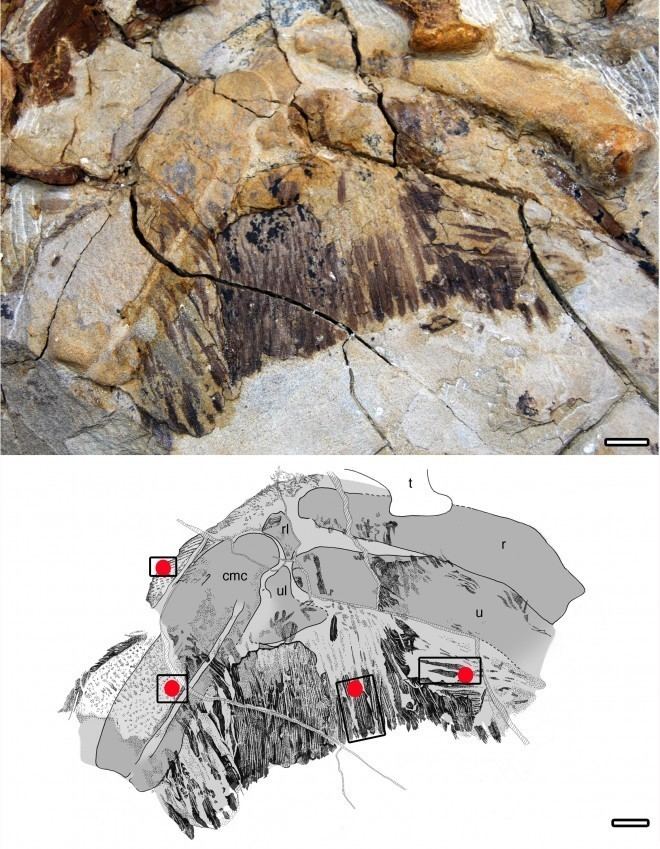
Fossils of Inkayacu were first found in 2008 on the Pacific coast of Ica, Peru. A nearly complete skeleton was uncovered in the Paracas National Reserve by an expedition team led by Rodolo Salas and studied by a team led by Julia Clarke of the University of Texas. Large penguins, including the species Perudyptes devriesi and Icadyptes salasi, had been described from the area the previous year. The first evidence of melanosomes is fossilized feathers was published in late 2008, being reported from an Early Cretaceous bird. Paleontologist Jakob Vinther, an author of the 2007 paper on the first fossilized melanosomes known, found melanosomes in the feathers of Inkayacu soon after the fossil was discovered.
Paleobiology
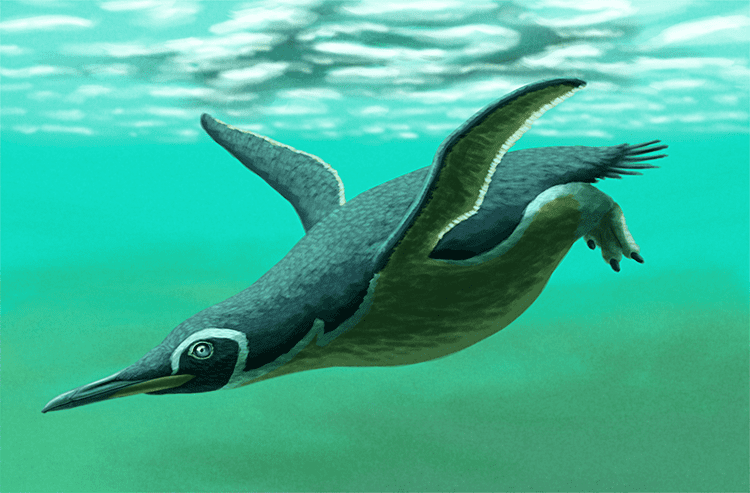
Inkayacu inhabited a sea that existed in Peru during the Late Eocene. Paddle-like limbs enabled an aquatic lifestyle. The large tightly packed melanosomes within the cells of living penguins gives the feathers added rigidity, which may be an adaptation for coping with the stresses of underwater flight. Because Inkayacu has smaller and fewer melanosomes, it may not have been able to swim very deep, possibly remaining near the surface. However, it is also possible that the melanosomes of modern penguins do not give them an advantage underwater, since the feathers on their undersides are primarily white, lacking the rigidity of melanin. If melanin is present in the feathers to add rigidity, it would be expected that all feathers on living penguins would be black.

